Catocala dulciola
Catocala dulciola
kah-TOCK-uh-lahMdul-see-OH-luh
Grote, 1881

Catocala dulciola
by Harold J. Vermes, courtesy of
Craig Vermes.
This site has been created by
Bill Oehlke.
Comments, suggestions and/or additional information are welcomed by Bill.
| TAXONOMY:
Superfamily: Noctuoidea
Family: Erebidae, Leach, [1815]
Subfamily: Erebinae, Leach, [1815]
Tribe: Catocalini, Boisduval, [1828]
Genus: Catocala, Schrank, 1802
|
DISTRIBUTION:
Catocala dulciola,
the Quiet or Sweet Underwing
(wingspan: 40-45mm), may well be endangered through most of its range:
New York through Virginia, west to Missouri and north to
Illinois and
Michigan.
It has also been reported in
Indiana,
Kentucky,
North Carolina,
Ohio,
Pennsylvania and
West Virginia.
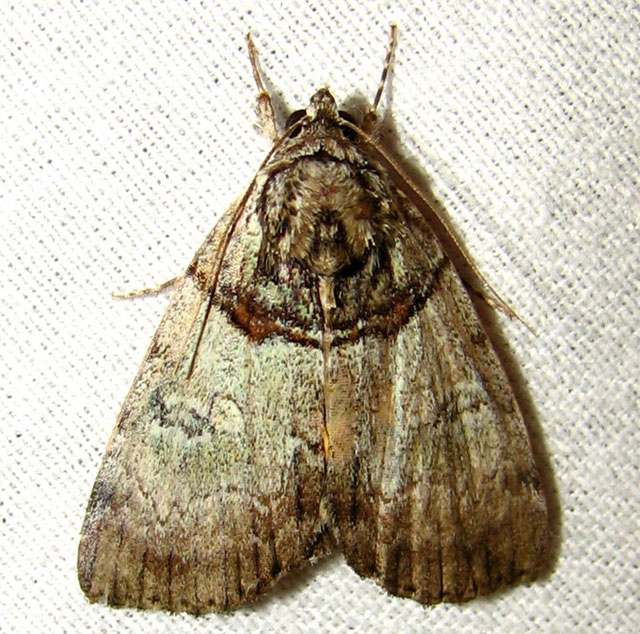
Catocala dulciola, McGayhesville, Rockingham County, Virginia,
1am, July 15, 2013, courtesy of Kyle Warnecke.
A double black antemedial line (inner line broken only near the costa)
with other lines obscure distinguishes dulciola.
There is also a dark basal dash on an otherwise plain, light grey
forewing. Also note the orangey-brown filler midway between the double am lines.
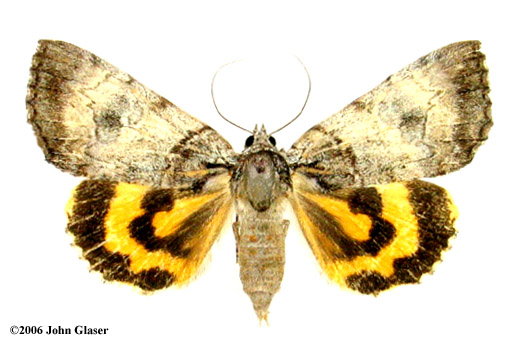
Catocala dulciola, courtesy of John Glaser.
FLIGHT TIMES AND PREFERRED FOOD PLANTS:
Catocala dulciola are usually on the wing in June and July.
John M. Coffman reports Catocala dulciola taken 3 mi. e Timberville, Rockingham County, Virginia, July 3, 1980.
The Catocala dulciola caterpillar feeds on hawthorn.
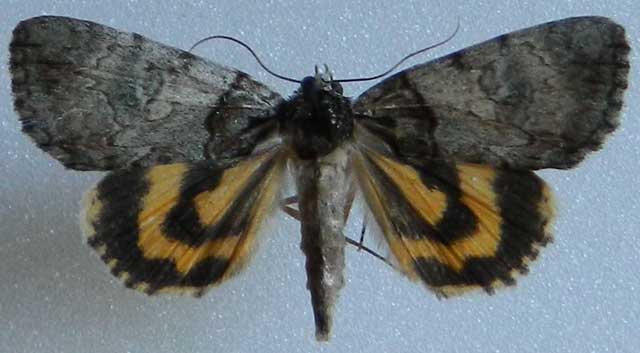
Catocala dulciola, Whitley County, Indiana,
June 25, 2017, courtesy of Tim Loeffler
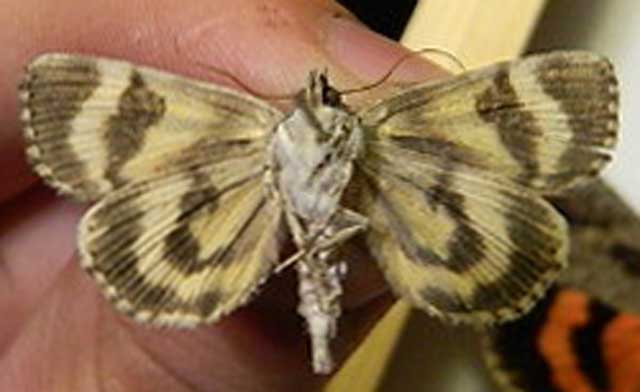
Catocala dulciola (verso), Whitley County, Indiana,
June 25, 2017, courtesy of Tim Loeffler
ECLOSION:
Adults eclose from pupae at soil surface.
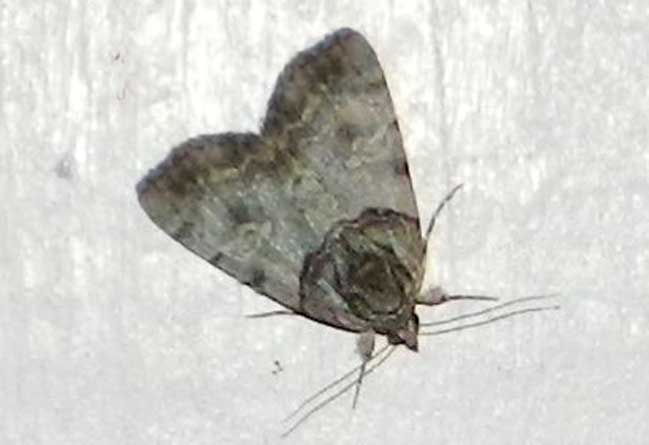
Catocala dulciola, Whitley County, Indiana, courtesy of Tim Loeffler
SCENTING AND MATING:
Catocala dulciola females
emit an airbourne pheromone and males use their antennae to track the
scent plume.
EGGS, CATERPILLARS, COCOONS, AND PUPAE:
Eggs are deposited on
tree bark in the fall and hatch the following spring.
Larval Food Plants
Listed below are primary food plant(s) and alternate food plants.
It is hoped that this alphabetical listing followed by the common
name of the foodplant will prove useful. The list is not exhaustive,
although some species seem very host specific.
Experimenting with closely related foodplants is worthwhile.
Return to Main Index
This page is brought to you by Bill Oehlke and the
WLSS. Pages are on space rented from Bizland. If you would like to become a "Patron of the Sphingidae/Catocala Sites",
contact Bill.
Please send sightings/images to Bill. I will do my best to respond to requests for identification help.
Enjoy one of nature's wonderments: Live Saturniidae (Giant Silkmoth) cocoons.

|

To show appreciation for this site, click on the flashing
butterfly to the left, a link
to many worldwide insect sites. |







